- Home
- Tom Clancy
Carrier: A Guided Tour of an Aircraft Carrier Page 7
Carrier: A Guided Tour of an Aircraft Carrier Read online
Page 7
Tom Clancy: Given what you have just said, how is the fleet bearing up under this extremely high Operations Tempo [Optempo]?
Admiral Johnson: That’s a question that requires an answer on more than one level. There is no denying that our sailors, by the very nature of their work, spend time away from their homes and families. Some of the things that we are looking at are ways to make sure that we don’t overstretch ourselves.
Right now we have a policy that says that ships will have no more than six months forward-deployed at sea, from portal to portal. We’re also maintaining a ratio of two-to-one for time at home port to deployed time, and no more than fifty percent of time out of home port when you are off deployment.
We are adhering to that policy, and I am the only one who can waive it for any reason. In fact, whether we are standing by that policy is one of my own measures of whether we are “stretching the rubber band too tight,” where people are concerned. So right now, we’re OK with that situation. Now, we have had a couple of exceptions to this rule last year because of problems with ship maintenance in a yard that closed down. The result is that in terms of readiness and execution, the fleet is “answering on all bells.” I want to make sure as you walk back from looking at deployment issues, that everyone is getting enough training to get ready, but not so much that their home lives suffer. We also want to make sure that the right equipment is available during training, so that the fleet fights with the same gear it trains with.
Tom Clancy: How is retention of personnel holding up?
Admiral Johnson: Retention right now is good, though there are pockets of concern in that situation. If you look, for instance, at pilot retention numbers, the aggregate numbers, they’re great. They’re not even worth talking about today. There is no problem there. Within that community, though, if you “peel that onion” back a layer, we’re beginning to see that we need to pay attention to the attrition rates of some kinds of air crews.
In my view, these situations are not developing just because the airlines are hiring. The airlines are always hiring, and will continue to hire. That’s a reality that we can’t change. But I do think that part of this softness in community retention is based upon the “turnaround” and non-deployed side of a Naval career.
In particular, we need to make sure that we’re not keeping people too far from home for too much time doing temporary kinds of assignments. We need to make sure that we don’t have backlogs in aircraft and equipment depot maintenance, so that our crews have enough airplanes to fly during turnarounds and workups. We also have to pay attention to the matter of funding enough flying hours to keep our people sharp. Let’s face it, junior officers [JOs] never get enough flight hours. I know that I didn’t as a young aviator, and I don’t know anyone who did. We’ve still got some work to do in that area.
These “soft” community areas are not just limited to naval aviation. We’ve got some year groups in the submarine community that we’re watching carefully, as well as some in the surface warfare professionals. Overall, though, we’re OK. On the enlisted side the numbers are excellent, and most significantly, the high quality of personnel is there.
These days, we’re having to work very hard to get that quality, and it’s a real challenge. The goal of our recruiting is to have ninety-five-percent high school graduates, with sixty-five percent of those recruits in the top mental group in their classes. When we achieve that, it’s good for the fleet, and we’re committed to achieving that.
However, the competition for that part of the labor market is really intense out there. Given the pressures of a healthy economy, I think that it’s going to be more and more of a challenge. The really good young men and women out there—the ones who are really smart and talented—everybody wants them. Frankly, while I can offer them a lot, there are other folks who can offer them more of things like money. Still, there are wonderful and patriotic young folks who take up the challenge, and we work hard to find them and keep them in the fleet.
Trust me when I say that the recruiting challenges will not go away. Remember, back in the Cold War we had to bring around 100,000 new recruits a year into the fleet to fill our needs. Today, even in a time of relative peace, we still need between 45,000 and fifty thousand new bsailors every year to keep our force healthy and running.
Tom Clancy: You just mentioned the end of the Cold War. Can you tell us something about the challenges that you and the fleet have faced in light of the end of the East/West conflict?
Admiral Johnson: I think that one of the biggest challenges that the Navy has is to make sure that our nation still has an appreciation for the value of the sea services, especially within the citizenry and the Congress. I think we need to educate the public to understand that while we have a great Navy now, it takes a lot of effort and money to keep it that way. Another challenge the Navy has been faced with in the last few years has been overcoming the public perceptions left by Tailhook. I believe that we’ve made great strides since then.
Tom Clancy: Do you feel that the challenges that the Navy had to face as a result of Tailhook and other incidents have helped the sea services deal better with the issues of women in the force?
Admiral Johnson: Yes, I do. Since we were the first of the services forced to confront the gender-related issues that the other military departments face right now, I hope and truly believe that we have learned from those hard experiences and are better for them. We needed to change the ways that we were doing business in many respects, and I think that we have, and I’m proud of that. I believe that we have a much better and stronger force today than we did before Tailhook.
Tom Clancy: Let’s talk a little more about the roles and missions that the Navy is undertaking in the post-Cold War world. For example, with the decline of the Russian fleet, what have you got the submarine force doing?
Admiral Johnson: We actually have some exciting things coming up for the submarine force. The New Attack Submarine [NSSN] program is underway, and Seawolf [SSN-21] has been commissioned. As far as the submarine mission is concerned, it is much more diverse than during the Cold War. Their main mission is still undersea warfare and antisubmarine warfare [ASW]. Today that mission is less predictable than it was during the Cold War, but challenging nonetheless.
The “big water” ASW mission is still a part of our lives, but these days littoral [inshore] ASW is an even bigger and emerging piece of that mission. I might add that inshore operations bring with them a whole new set of challenges. Our submarine force is today involved in strike warfare, reconnaissance, special operations, and lots of other things. The community is being reshaped to reflect all of these new missions, and remains a valuable and viable part of the fleet. And even though today’s Russian submarine force is not the Soviet fleet of the Cold War era, I feel strongly that we must maintain sufficient capability to deal with it. With all of that factored in, our force of submarines is still going to shrink. We have around seventy SSNs today, and we’ll probably drop to around fifty-five in the next few years.
Tom Clancy: The doctrinal move of the sea services to specialize on the littoral regions has been going on for some time now and the force seems to have adapted well. Can you please tell us your views on how the transition from a “blue water” Navy to an inshore focus has gone?
Admiral Johnson: The transition has gone extremely well, though the Navy has always concentrated on that mission to some degree. You have to remember that the majority of the world’s capitals and much of its population reside close to the shores of the world’s oceans. Because of that, the Navy has always been tasked for littoral warfare. We kept the littoral missions at the forefront of our planning and preparation throughout this century.
During the Cold War years that mission was somewhat overshadowed by open ocean missions. With the demise of the Soviet Union, what we call“blue water” missions have declined in importance somewhat. Overall, I think we’re ideally tasked to meet the challenges of the new century with the force that
we have today and the force that we’re building for tomorrow. This includes systems like the land attack destroyer variant of the SC-21 escort design that we’re currently designing.
Tom Clancy: So does this mean that the mission of the U.S. Navy in the 21 st century is going to be like that of the Royal Navy in the 19th century? In other words, showing the flag, keeping the peace, and letting the locals know that we’re there?
Admiral Johnson: There’s certainly a lot of that in our future plans. I think that the way that we would describe our mission in the Navy is that we plan to shape the environment or battle space. We will do that through forward presence. I might also add that we will do that while carrying the full spectrum of weapons, sensors, and other tools that we need, so that the national leadership does not have to wait for the action to be joined. That is critical because, as I like to say, there is no substitute for being there.
The Navy has to be there and ready to trigger whatever kind of response might be required by a rapidly developing situation. That response might be little, it might be big. In one context we’re the enabling force for follow-on units, and in another we’re the striking power all by ourselves for whatever might be going on in a particular area. Our mission is always situational. There are times when we’ll do port visits and paint schoolhouses. That’s a part of our job. But we are also ready to kick somebody’s ass if that’s required. So to that degree, your Royal Navy analogy is quite valid.
Tom Clancy: One major change in how the military is doing business today compared to the past is that, unlike the CNOs of just a decade ago, you don’t actually command ships and planes anymore. Under Goldwater-Nichols, the various branches of the military and their assets are combined into organization “package” forces for regional commanders in chief [CinCs] to use as required by the National Command Authorities. Under the new system that came into effect in the late 1980’s, the world has been divided into regions and warfare specialties, with a joint unified command and a commander in chief [CinC] assigned to each. The CinCs package forces into joint task forces [JTFs], which are the basic working unit of joint warfare. Could you tell us a little about how that process works?
Admiral Jay Johnson making a point during his interview with the author.
JOHN D. GRESHAM
Admiral Johnson: As far as the Navy goes, I’m the “organize, train, and equip guy.” I get the forces ready by making sure that the Navy is well staffed, that our personnel know what they’re doing, and that the machinery to support them is of the right kind and in good working order. At the appropriate time, I turn over these forces to the warfighting CinCs. While those ships and aircraft are assigned to numbered fleets and squadrons, we often have to package them in some rather unique ways, depending upon the situation and the requirements.
Tom Clancy: By that do you mean contingencies like Haiti back in 1994? I recall that you stripped two big-deck aircraft carriers of their air wings, and replaced them with a couple of aviation brigades with helicopters and troops from XVIII Airborne Corps.
Admiral Johnson: Well, since I was the Deputy Joint Task Force [JTF] Commander and naval component commander of that operation, let me give you my two cents’ worth on how that all worked out. It was really interesting and, I might add, the right thing to do for that situation. I was the commander of the Second Fleet at the time, and was looking at new ways to use carriers. I took some abuse from some of my Naval aviation pals at the time, who said, “Well, there you go, Johnson. You’ve sold naval aviation down the river. Next thing you know you’ll be putting army helicopters on aircraft carriers.”
The truth of the situation is that I was not threatened by that at all. If you look at what the Navy and our joint service partners were asked to do in Haiti, and you put it into the context of that particular place, at that time, against that threat, and that total scenario, what we did was damned near perfect. It really was. Almost as close to perfect as you can get. Now, the next time, in a different place and situation, doing something like that may be the dumbest idea in the world. For Haiti, though, converting the carriers was as “right on” as anyone could have asked.
Tom Clancy: Once the need for the helicopters during Operation Restore Democracy was finished, how long did it take to get the regular air groups back on board and operating normally?
Admiral Johnson: Well, let me square you on this whole process. The Eisenhower [CVN-69] had the aviation brigade from the 10th Mountain Division, and the America [CV-66] had the folks from the Army’s 160th Special Operations Aviation Regiment at Fort Campbell. When we were ready to change back to normal, here’s what happened. First the helicopters and their personnel cleared off to the Haitian mainland, and Eisenhower turned away. I was there, and watched this with my own eyes. The carrier battle groups left Port-au-Prince harbor, motored out past the island of Guni, and before they left the operations area, both had “trapped” their Tomcats, their A-6 Intruders, and their E-2C Hawkeye support aircraft. By the time that they headed north, both carriers had fully reconstituted air groups, and made the transit home mission-ready. It was a great use of carriers, in my view.
Tom Clancy: So would you say that one of the real challenges of this post-Cold War transition has been trying to adapt the minds and thinking of people in the Navy to new ideas and concepts? Making people say “Why not?” as opposed to “Are you out of your mind?”
Admiral Johnson: Absolutely. It’s hard to adjust to change. And we’re all guilty of resisting it sometimes, as it turns out. I’m as bad as the rest of them, even though I like to think that I’m open-minded. I am open-minded, until you start messing with one of my ships....
Tom Clancy: Could it not be said that your willingness to be “adaptive” with those two carriers may very well help to justify continued aircraft carrier development and procurement?
Admiral Johnson: It could indeed. I can tell you for a fact that the Navy gained a whole lot of new friends in the U.S. Army as a result of that exercise. Especially when their troops found out that they did not have to eat MREs [Meals, Ready to Eat] during the mission. In fact, here’s an interesting piece of trivia from the commanding officers [COs] of those two carriers. It turned out that the soldiers from the two Army aviation units liked Navy chow so much, and ate so much of it, that we had to retool the resupply schedule. The soldiers were just shoveling down all this food on board the ships. Navy chow is good!
Tom Clancy: Taking the Haiti example a bit further, it is fairly clear that since the end of the Cold War, the Navy has been used for a wide variety of roles and missions—everything from blockades and strike warfare [Persian Gulf] to rescues and humanitarian relief [Balkans and Somalia]. Given that you already do such a wide variety of things so well, what else do you want the Navy to be capable of doing in the 21st century?
Admiral Johnson: You’re right, the Navy’s pretty flexible! In the future, I think that you’re going to see us doing some new things with the Marine Corps. We’re finding new ways to organize and structure our forces to accommodate new roles and missions. One specific area that I know we’ll be developing is Theater Ballistic-Missile Defense [TBMD], using our Aegis cruisers and destroyers. That’s new and exciting stuff that ten years from now will be everyday business, though today it’s all leading-edge technology.
Tom Clancy: Especially in the absence of a “blue water” threat, has the Navy gotten down to developing a real doctrine to go with the move to littoral warfare?
Admiral Johnson: The answer is yes, but I qualify that answer by saying that we’re just at the leading edge of getting it done. At the Naval Warfare Doctrine Command, they’re looking at how we can take the earlier “blue-water” doctrine of the Cold War, and embed it in a very solid way into this new reality of littoral warfare. We’re trying hard to build new linkages with our various Naval academic institutions like the War College [in Newport, Rhode Island], the Postgraduate School [in Monterey, California], and even the Naval Academy [in Annapolis, Maryland], as wel
l as in the tactical and operational sides of the fleet.
Tom Clancy: Once upon a time, not so long ago, the Navy was seen as not being a good partner in the joint warfare arena. Can you tell us, from the Navy point of view, how you view your corporation and participation in joint warfare these days?
Admiral Johnson: Frankly, I don’t see any friction today. I think that’s old news. As far as I’m concerned, the Navy is on the leading edge in the joint warfare business these days. In fact, we’re committed to it at all levels. Here’s a case in point. When we do our carrier battle group [CVBG] and amphibious ready group [ARG] workups, that’s all joint. What we used to call a FLEETEX [Fleet Exercise] in the old days is now the JTFEX [Joint Task Force Exercise]. Of course, we still work within our fundamental core sea service [Navy and Marine Corps] competencies during training. But once we get into the JTFEX, it’s units like the 2nd Fleet CVBG, the II MEF [Marine Expeditionary Force] MEU [SOC], the XVIII Airborne Corps, the 8th Air Force, and our allies all together. So we are absolutely committed to the joint warfare arena, right down to training within the Joint Training Matrix. This is not the way it was during Desert Storm where the Navy was still “fighting the feeling.”

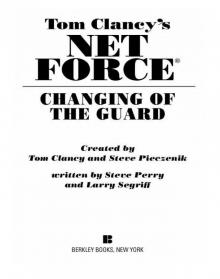 Changing of the Guard
Changing of the Guard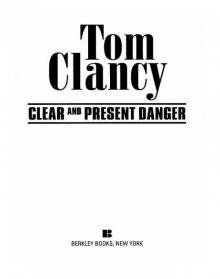 Clear and Present Danger
Clear and Present Danger Hounds of Rome
Hounds of Rome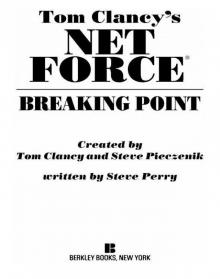 Breaking Point
Breaking Point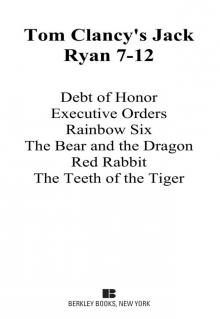 Tom Clancy's Jack Ryan Books 7-12
Tom Clancy's Jack Ryan Books 7-12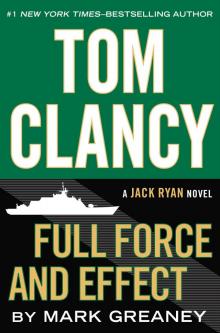 Full Force and Effect
Full Force and Effect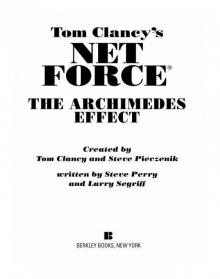 The Archimedes Effect
The Archimedes Effect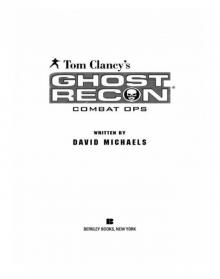 Combat Ops
Combat Ops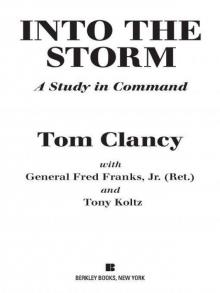 Into the Storm: On the Ground in Iraq
Into the Storm: On the Ground in Iraq Under Fire
Under Fire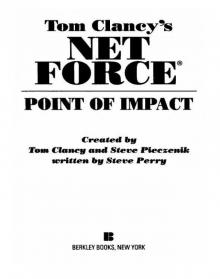 Point of Impact
Point of Impact Red Rabbit
Red Rabbit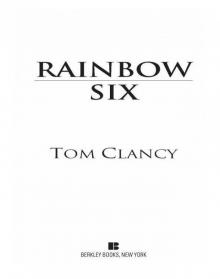 Rainbow Six
Rainbow Six The Hunt for Red October
The Hunt for Red October The Teeth of the Tiger
The Teeth of the Tiger Conviction (2009)
Conviction (2009)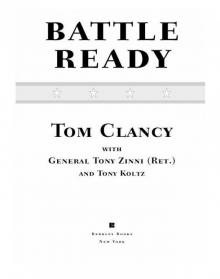 Battle Ready
Battle Ready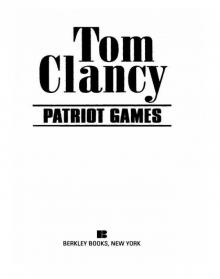 Patriot Games
Patriot Games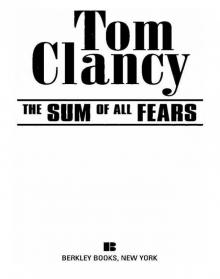 The Sum of All Fears
The Sum of All Fears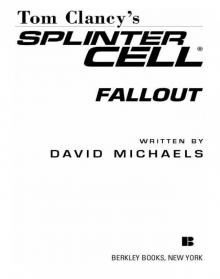 Fallout (2007)
Fallout (2007) Red Storm Rising
Red Storm Rising The Cardinal of the Kremlin
The Cardinal of the Kremlin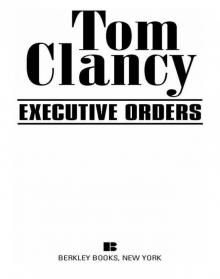 Executive Orders
Executive Orders Lincoln, the unknown
Lincoln, the unknown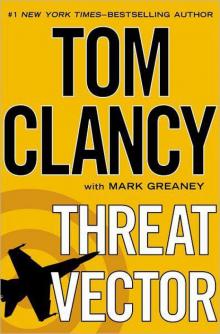 Threat Vector
Threat Vector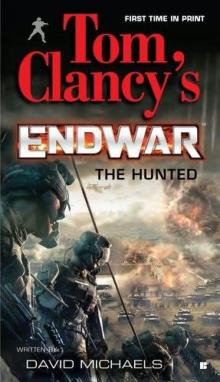 The Hunted
The Hunted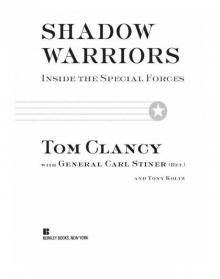 Shadow Warriors: Inside the Special Forces
Shadow Warriors: Inside the Special Forces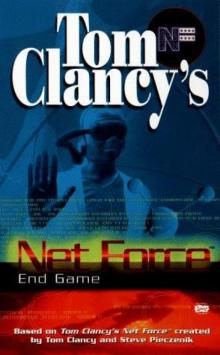 End Game
End Game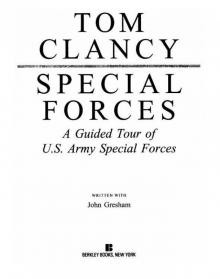 Special Forces: A Guided Tour of U.S. Army Special Forces
Special Forces: A Guided Tour of U.S. Army Special Forces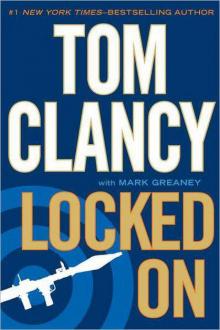 Locked On
Locked On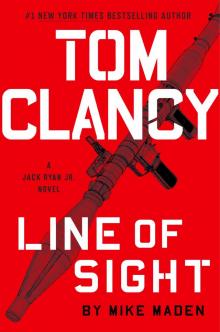 Line of Sight
Line of Sight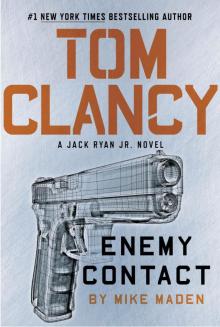 Tom Clancy Enemy Contact - Mike Maden
Tom Clancy Enemy Contact - Mike Maden Fighter Wing: A Guided Tour of an Air Force Combat Wing
Fighter Wing: A Guided Tour of an Air Force Combat Wing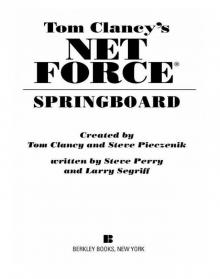 Springboard
Springboard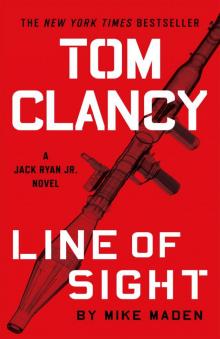 Line of Sight - Mike Maden
Line of Sight - Mike Maden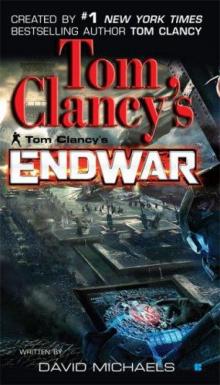 EndWar
EndWar Dead or Alive
Dead or Alive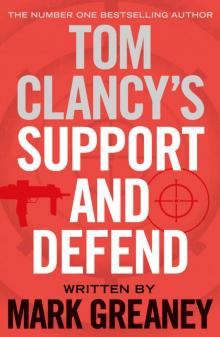 Tom Clancy Support and Defend
Tom Clancy Support and Defend Checkmate
Checkmate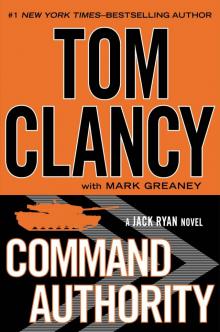 Command Authority
Command Authority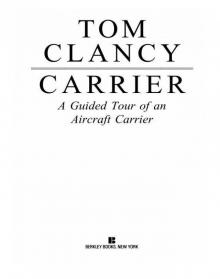 Carrier: A Guided Tour of an Aircraft Carrier
Carrier: A Guided Tour of an Aircraft Carrier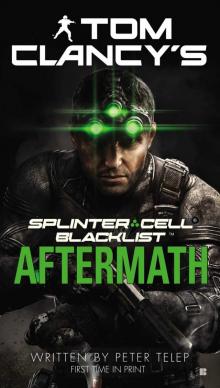 Blacklist Aftermath
Blacklist Aftermath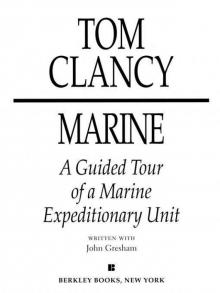 Marine: A Guided Tour of a Marine Expeditionary Unit
Marine: A Guided Tour of a Marine Expeditionary Unit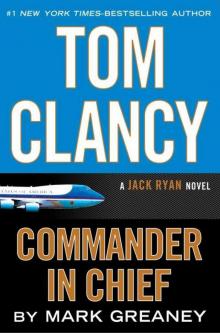 Commander-In-Chief
Commander-In-Chief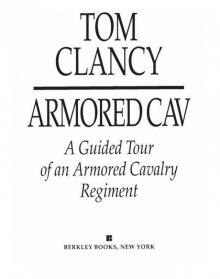 Armored Cav: A Guided Tour of an Armored Cavalry Regiment
Armored Cav: A Guided Tour of an Armored Cavalry Regiment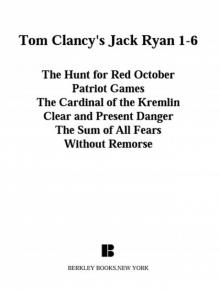 Tom Clancy's Jack Ryan Books 1-6
Tom Clancy's Jack Ryan Books 1-6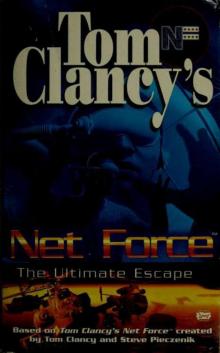 The Ultimate Escape
The Ultimate Escape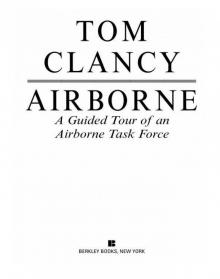 Airborne: A Guided Tour of an Airborne Task Force
Airborne: A Guided Tour of an Airborne Task Force Debt of Honor
Debt of Honor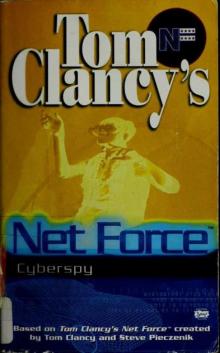 Cyberspy
Cyberspy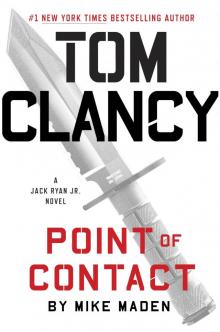 Point of Contact
Point of Contact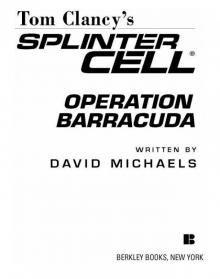 Operation Barracuda (2005)
Operation Barracuda (2005)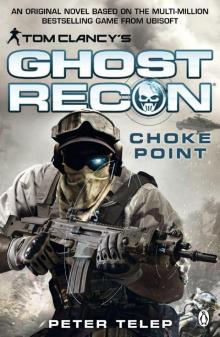 Choke Point
Choke Point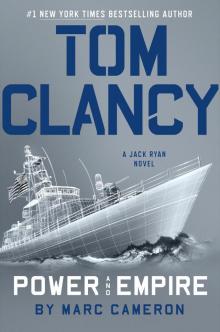 Power and Empire
Power and Empire Every Man a Tiger: The Gulf War Air Campaign
Every Man a Tiger: The Gulf War Air Campaign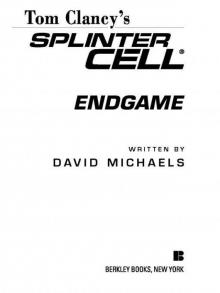 Endgame (1998)
Endgame (1998)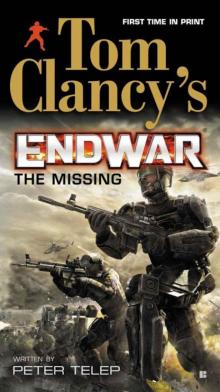 EndWar: The Missing
EndWar: The Missing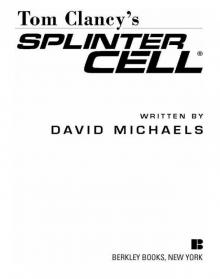 Splinter Cell (2004)
Splinter Cell (2004)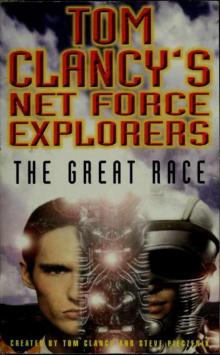 The Great Race
The Great Race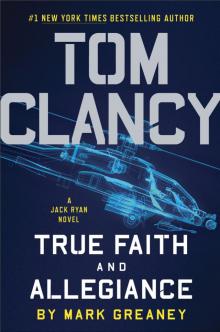 True Faith and Allegiance
True Faith and Allegiance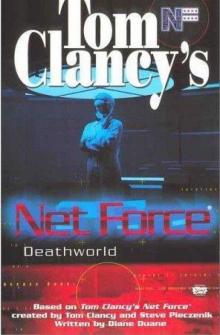 Deathworld
Deathworld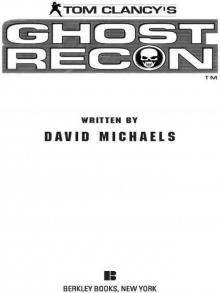 Ghost Recon (2008)
Ghost Recon (2008)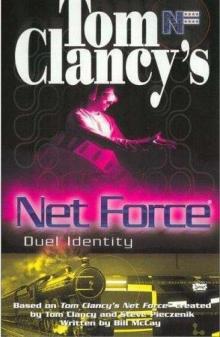 Duel Identity
Duel Identity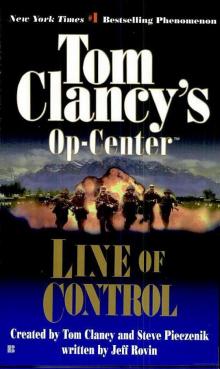 Line of Control o-8
Line of Control o-8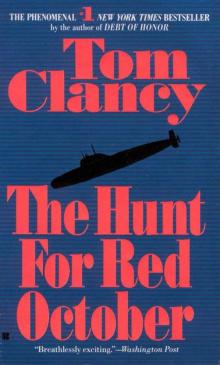 The Hunt for Red October jr-3
The Hunt for Red October jr-3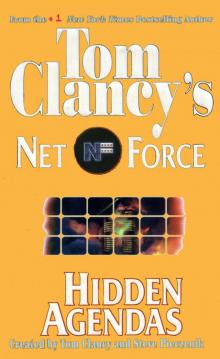 Hidden Agendas nf-2
Hidden Agendas nf-2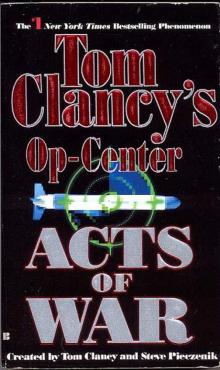 Acts of War oc-4
Acts of War oc-4 Ruthless.Com pp-2
Ruthless.Com pp-2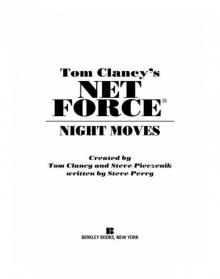 Night Moves
Night Moves The Hounds of Rome - Mystery of a Fugitive Priest
The Hounds of Rome - Mystery of a Fugitive Priest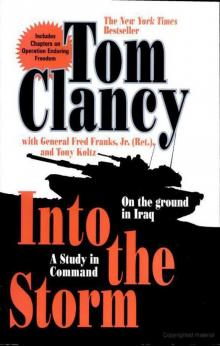 Into the Storm: On the Ground in Iraq sic-1
Into the Storm: On the Ground in Iraq sic-1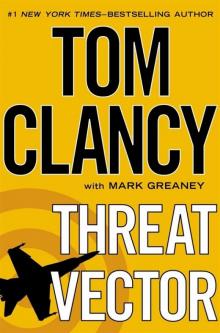 Threat Vector jrj-4
Threat Vector jrj-4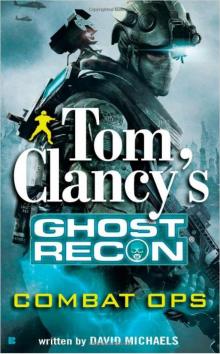 Combat Ops gr-2
Combat Ops gr-2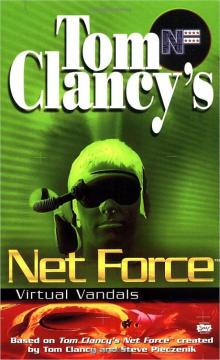 Virtual Vandals nfe-1
Virtual Vandals nfe-1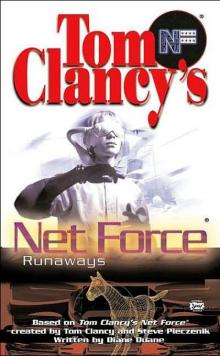 Runaways nfe-16
Runaways nfe-16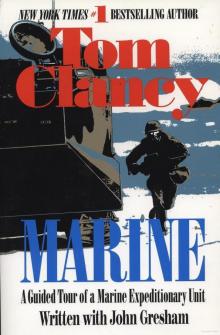 Marine: A Guided Tour of a Marine Expeditionary Unit tcml-4
Marine: A Guided Tour of a Marine Expeditionary Unit tcml-4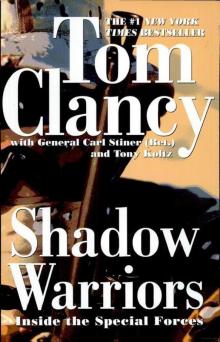 Shadow Warriors: Inside the Special Forces sic-3
Shadow Warriors: Inside the Special Forces sic-3 Jack Ryan Books 1-6
Jack Ryan Books 1-6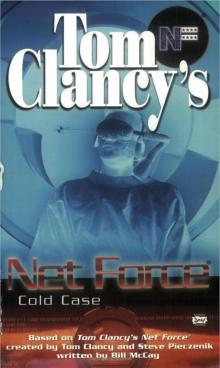 Cold Case nfe-15
Cold Case nfe-15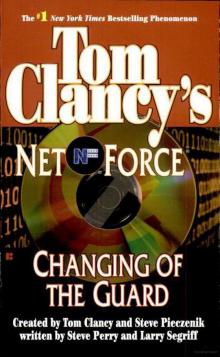 Changing of the Guard nf-8
Changing of the Guard nf-8 Splinter Cell sc-1
Splinter Cell sc-1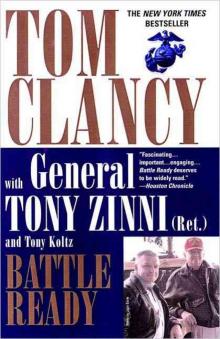 Battle Ready sic-4
Battle Ready sic-4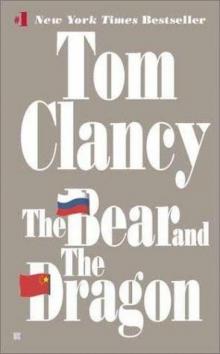 The Bear and the Dragon jrao-11
The Bear and the Dragon jrao-11 Fighter Wing: A Guided Tour of an Air Force Combat Wing tcml-3
Fighter Wing: A Guided Tour of an Air Force Combat Wing tcml-3 Patriot Games jr-1
Patriot Games jr-1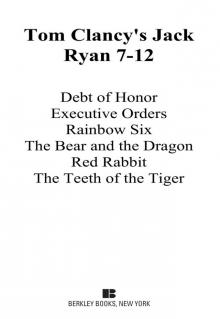 Jack Ryan Books 7-12
Jack Ryan Books 7-12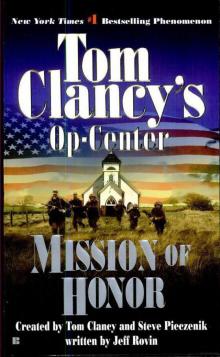 Mission of Honor o-9
Mission of Honor o-9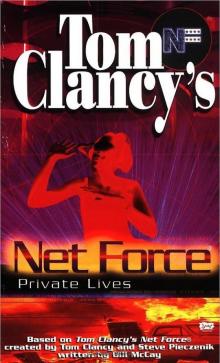 Private Lives nfe-9
Private Lives nfe-9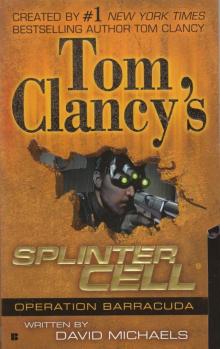 Operation Barracuda sc-2
Operation Barracuda sc-2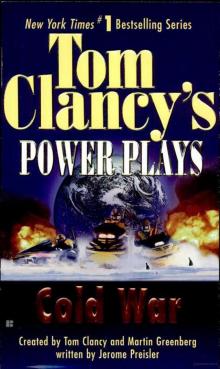 Cold War pp-5
Cold War pp-5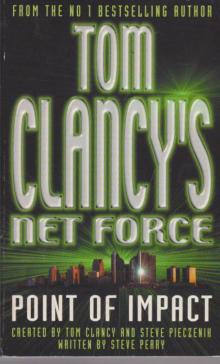 Point of Impact nf-5
Point of Impact nf-5 Red Rabbit jr-9
Red Rabbit jr-9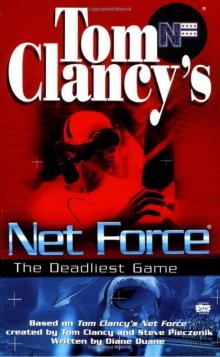 The Deadliest Game nfe-2
The Deadliest Game nfe-2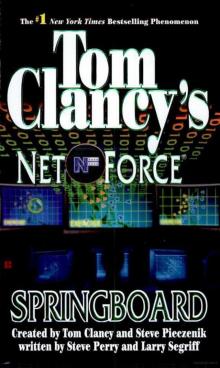 Springboard nf-9
Springboard nf-9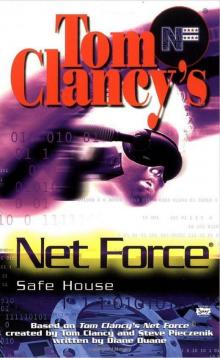 Safe House nfe-10
Safe House nfe-10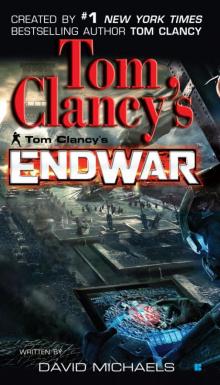 EndWar e-1
EndWar e-1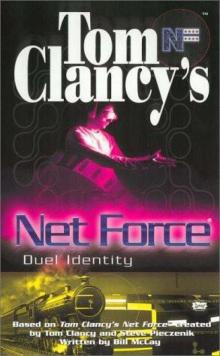 Duel Identity nfe-12
Duel Identity nfe-12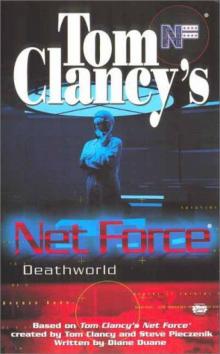 Deathworld nfe-13
Deathworld nfe-13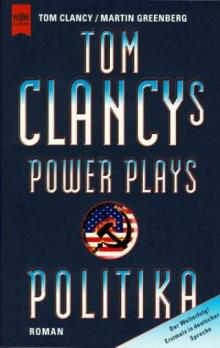 Politika pp-1
Politika pp-1 Rainbow Six jr-9
Rainbow Six jr-9 Tom Clancy's Power Plays 1 - 4
Tom Clancy's Power Plays 1 - 4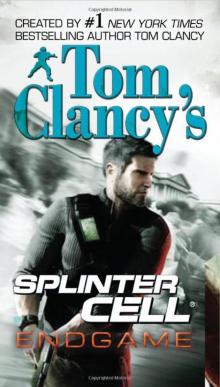 Endgame sc-6
Endgame sc-6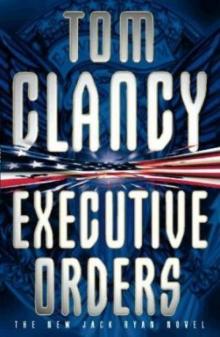 Executive Orders jr-7
Executive Orders jr-7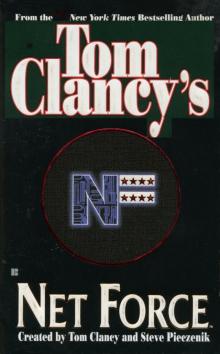 Net Force nf-1
Net Force nf-1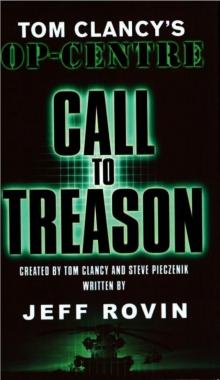 Call to Treason o-11
Call to Treason o-11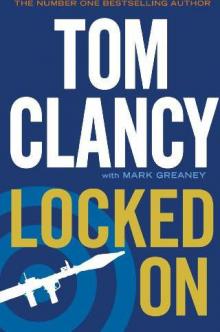 Locked On jrj-3
Locked On jrj-3 Against All Enemies
Against All Enemies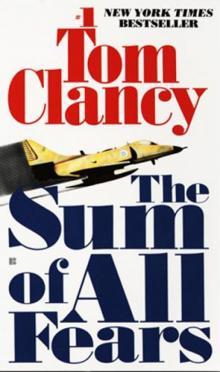 The Sum of All Fears jr-7
The Sum of All Fears jr-7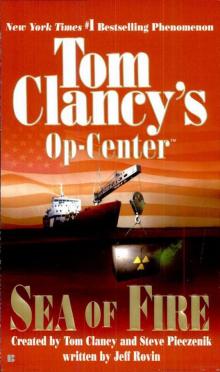 Sea of Fire o-10
Sea of Fire o-10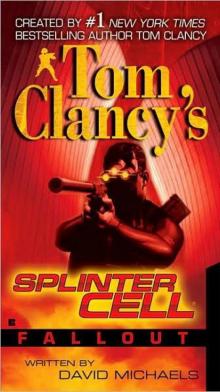 Fallout sc-4
Fallout sc-4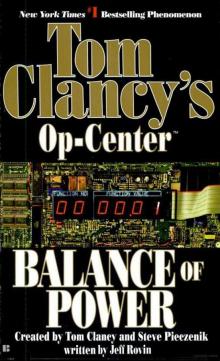 Balance of Power o-5
Balance of Power o-5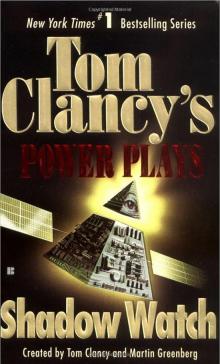 Shadow Watch pp-3
Shadow Watch pp-3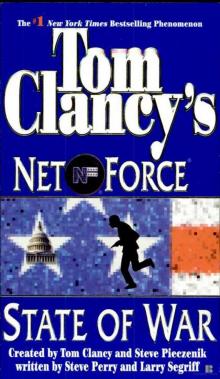 State of War nf-7
State of War nf-7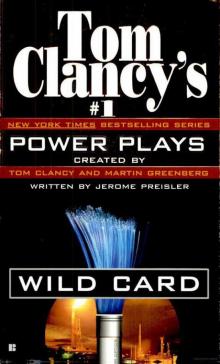 Wild Card pp-8
Wild Card pp-8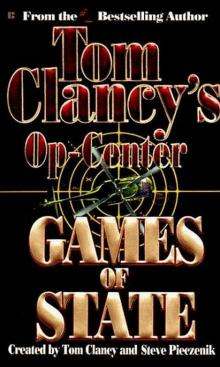 Games of State o-3
Games of State o-3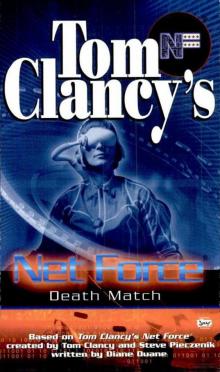 Death Match nfe-18
Death Match nfe-18 Against All Enemies mm-1
Against All Enemies mm-1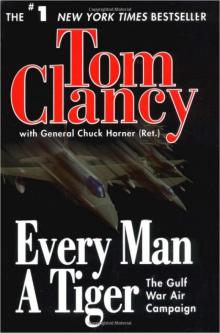 Every Man a Tiger: The Gulf War Air Campaign sic-2
Every Man a Tiger: The Gulf War Air Campaign sic-2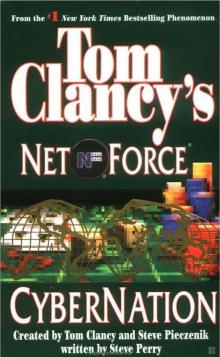 Cybernation nf-6
Cybernation nf-6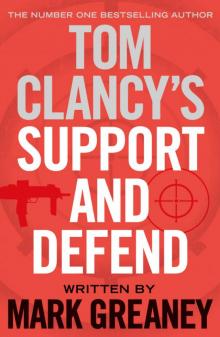 Support and Defend
Support and Defend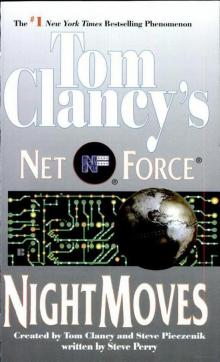 Night Moves nf-3
Night Moves nf-3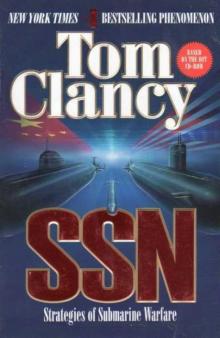 SSN
SSN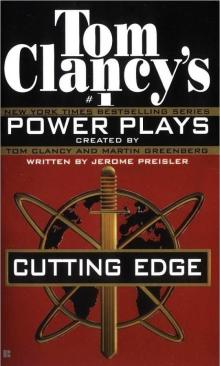 Cutting Edge pp-6
Cutting Edge pp-6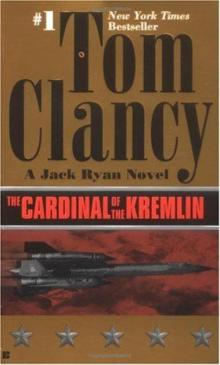 The Cardinal of the Kremlin jrao-5
The Cardinal of the Kremlin jrao-5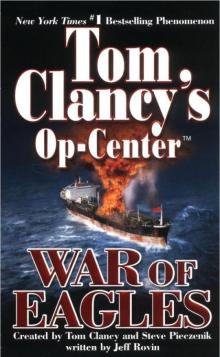 War of Eagles o-12
War of Eagles o-12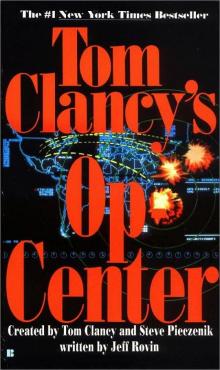 Op-Center o-1
Op-Center o-1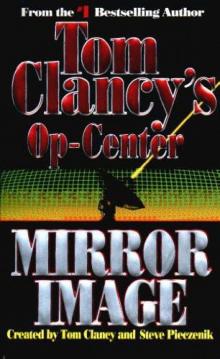 Mirror Image o-2
Mirror Image o-2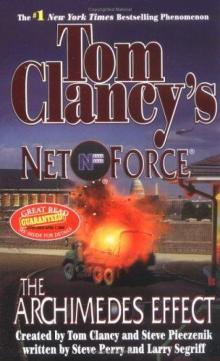 The Archimedes Effect nf-10
The Archimedes Effect nf-10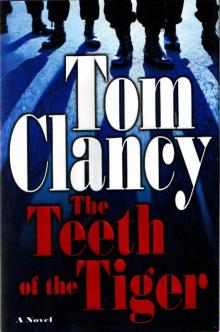 Teeth of the Tiger jrj-1
Teeth of the Tiger jrj-1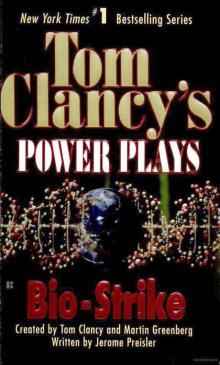 Bio-Strike pp-4
Bio-Strike pp-4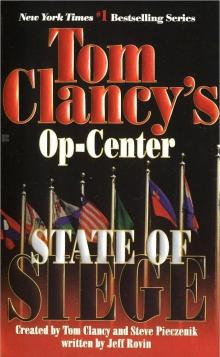 State of Siege o-6
State of Siege o-6 Debt of Honor jr-6
Debt of Honor jr-6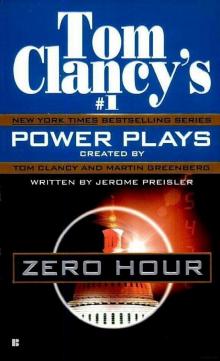 Zero Hour pp-7
Zero Hour pp-7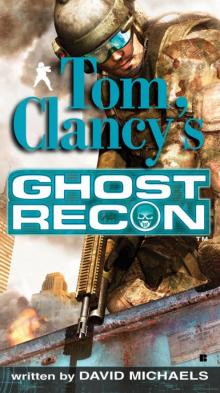 Ghost Recon gr-1
Ghost Recon gr-1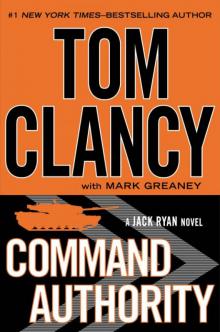 Command Authority jr-10
Command Authority jr-10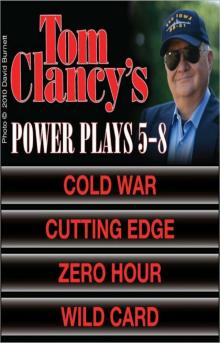 Tom Clancy's Power Plays 5 - 8
Tom Clancy's Power Plays 5 - 8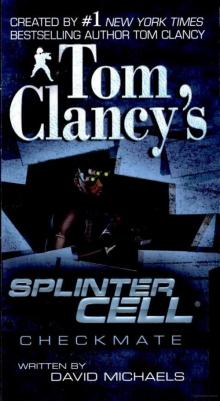 Checkmate sc-3
Checkmate sc-3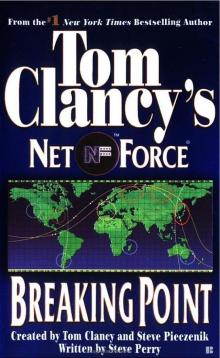 Breaking Point nf-4
Breaking Point nf-4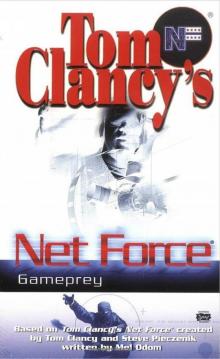 Gameprey nfe-11
Gameprey nfe-11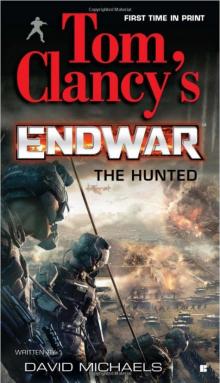 The Hunted e-2
The Hunted e-2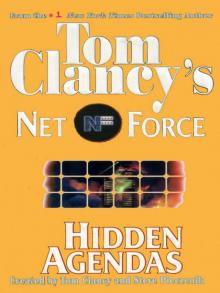 Hidden Agendas
Hidden Agendas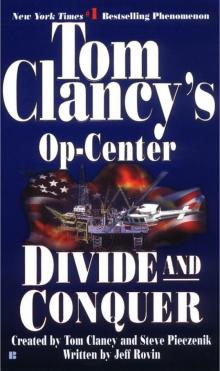 Divide and Conquer o-7
Divide and Conquer o-7